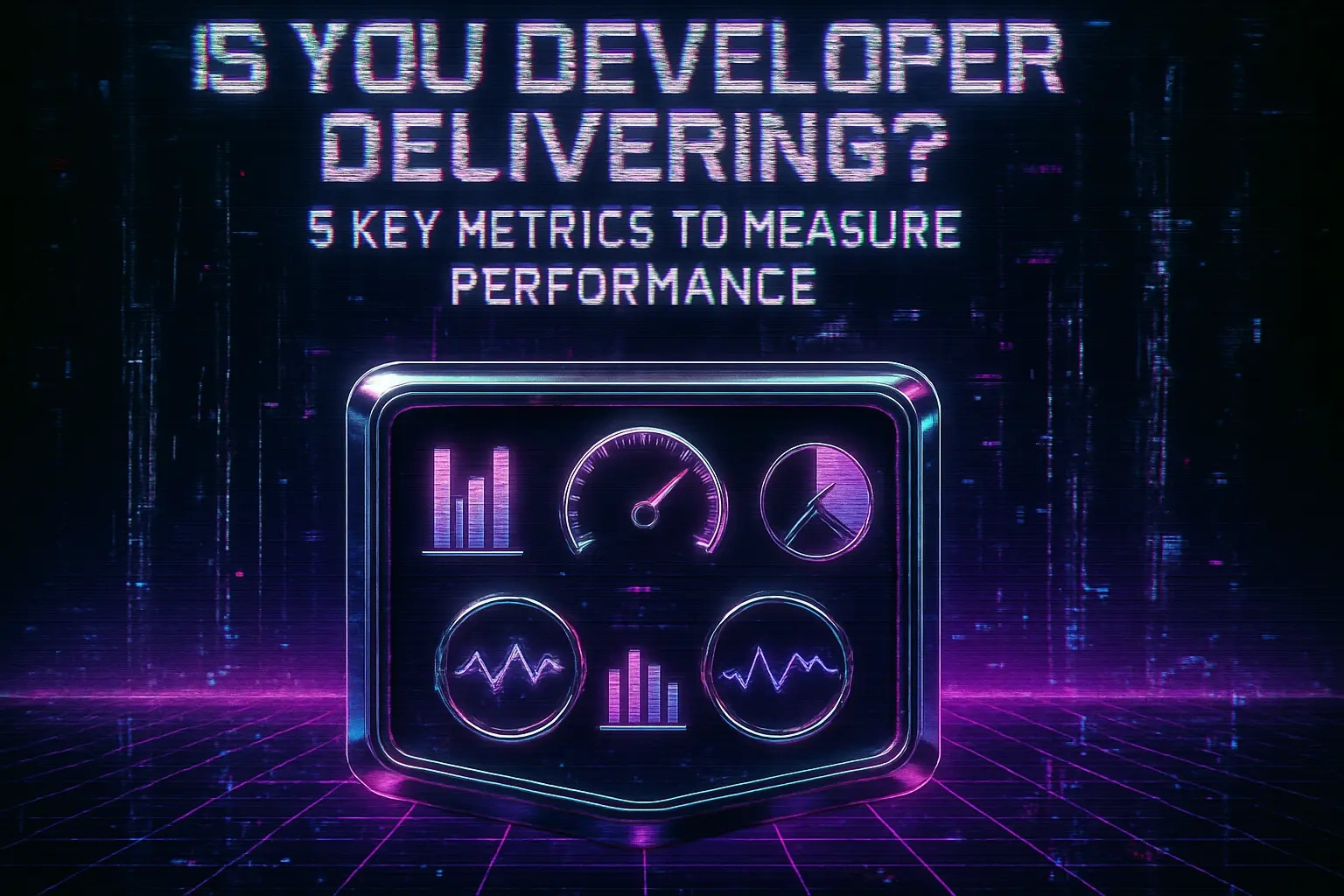Is Your Developer Delivering? 5 Key Metrics to Measure Performance

Is Your Developer Delivering? 5 Key Metrics to Measure Performance
Metric 1: Code Quality and Maintainability
Code Reviews and Adherence to Coding Standards
Measuring Technical Debt and Bug Rate
Metric 2: Adherence to Deadlines and Timelines
Tracking Milestone Completion Rates
Cycle Time and Lead Time
Metric 3: Communication and Proactiveness
Responsiveness and Clarity
Proactiveness in Problem-Solving
Metric 4: Budget and Resource Management
Comparing Estimated vs. Actual Hours
Value Delivered vs. Cost
Metric 5: Impact on Business Goals
Correlation with Site Performance and Conversion Rates
Stakeholder and User Satisfaction
Bringing It All Together
References
Is Your Developer Delivering? 5 Key Metrics to Measure Performance
Metric 1: Code Quality and Maintainability
Code Reviews and Adherence to Coding Standards
Measuring Technical Debt and Bug Rate
Metric 2: Adherence to Deadlines and Timelines
Tracking Milestone Completion Rates
Cycle Time and Lead Time
Metric 3: Communication and Proactiveness
Responsiveness and Clarity
Proactiveness in Problem-Solving
Metric 4: Budget and Resource Management
Comparing Estimated vs. Actual Hours
Value Delivered vs. Cost
Metric 5: Impact on Business Goals
Correlation with Site Performance and Conversion Rates
Stakeholder and User Satisfaction
Bringing It All Together
References
Posted Jul 4, 2025
Discover the 5 key metrics to measure your Shopify developer's performance. Learn how to track code quality, deadlines, and more to ensure you're getting the value you expect.










